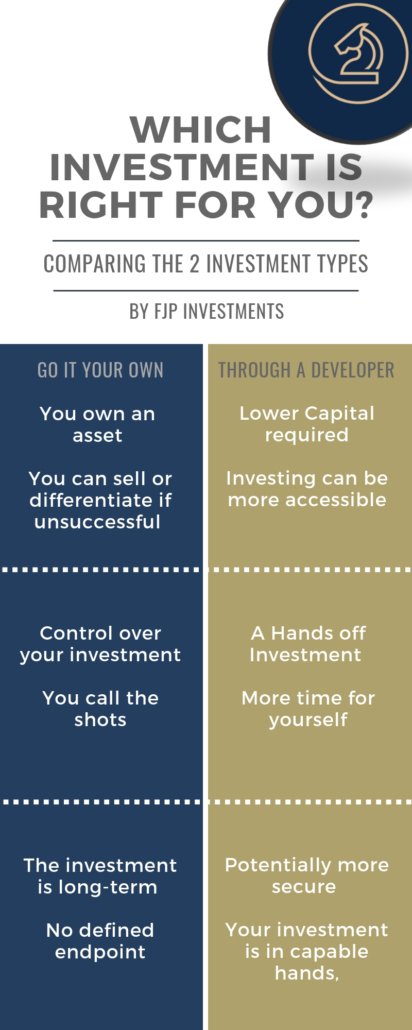Student Property Investment | Ultimate Guide [Updated 2020]
Our guide to everything you need to know about a student property investment.
Following on from our recent post about HMO Property Investments, we look at one of the most popular forms of houses of multiple occupation (HMO) in a student property investment.
Student Property has continued to see increased interest from international investors, and with good reason. Savills highlighted that property prices in key areas for education in the UK are as high as 37%. For perspective, investors that bought a house and then sold it during the three years from 2015 – 2018 could have effectively paid for a three-year university course with the profits alone.
Savills also highlight that, as of March 2020, global investment in Europe student property has reached over £1bn. This is higher than many could have predicted just a few years prior.
How do you define a student property investment?
Student Property lets are a form of HMO, being purpose-built apartments consisting of studios or cluster flats. The properties are built with large communal areas, close to universities and have exclusive planning permission for student-use only.
You can either choose to invest and convert your own property into a HMO and target students, or you can invest in a developer’s large-scale student property. Either one of these options have their own benefits and drawbacks.
A HMO investment
There are many benefits to investing in your own HMO student property, many of these benefits were covered in our recent post here. To summarise, the yield when compared to standard buy-to-let (BTL) properties is a significant incentive.
With a HMO, you can obtain higher returns on your property as you have more tenants. You can charge more by letting out the rooms individually as opposed to the entire property. You also reduce personal risk through an increase of income streams, with more tenants paying the total rent.
Choosing to invest in your own HMO and targeting students means you also have an asset. You will have the benefit of owning the property that is likely to increase in value, given you have identified a high growth area.
As an investor, you also have the opportunity to receive profitable returns for many years going forward, this being for as for as long as you own the property, as opposed to a limited investment with returns over a pre-requisite period of time.
You are also in full control of your investment. There is no actual guarantee that you will get a return on a developer’s investment, and so by doing this yourself, you take full control and responsibility for your investment. Depending on your approach, this may be a safer option for you. Consider that an investment with a developer could be safer though, given the developer is specialising in the area.
To support this, guarantors come in the form of parents for most students. This generally makes rent received far safer, and statistics show that students are some of the best tenants when It comes to paying rent. This research also cites maintenance loans being used to fund the payment as being a major benefit.
A developer ́s project
Clearly then there are many benefits to investing in your own HMO property, but this may not be an option for many. The reason for this is the high level of capital required.
Purchasing a property outright is not an option for many. House prices in high growth areas, near reputable universities, are high. Of key areas such as Exeter, Birmingham and Manchester, Zoopla report that for an average three-bedroom house you are looking at a purchase price of over £305,000 as of January 2019.
When investing in student property through a developer, you can often invest as little as £25,000. Given you have researched the investment opportunity, and you have used a reputable investment broker, you should see a return on your investment.
Unlike regular HMOs, student property investments made through a developer are more hands off, allowing you to focus your efforts elsewhere.
You may benefit as an investor by making several investments through a developer or broker, this being an easier and more viable option for many investors. Consider the risk and rewards to this investment strategy though, be aware that higher returns on your investment generally means the risk is higher also.

The benefits are clear for a student property investment then, whether this is through your own HMO investment or a developer’s project. Something that hasn’t been covered, and is a major benefit shared by both investment strategies, is the high levels of demand.
Demand for student property
Although there has been a steady demand for HMO ́s over the years, the demand for student property continues to soar. Universities cannot keep up with the demand to provide students with accommodation, and so often allow first year students only to stay in the halls of residence, with this making up roughly a third of total students.
Statistics published by UCAS also highlight that there is an increase in students attending university in 2020.

There was a decline of 1.5% in UK applications to go to university in 2019, a small drop considering the rising costs of tuition and current uncertain economic conditions.
There has been an increase in both EU and rest of the world applications for UK universities. EU applicants are up by 2% from the same time last year, and there is a substantial 8% rise in rest of the world applicants to a record high, all of whom need accommodation.
In contrast to the housing market as a whole, the economy also has little bearing on the number of students applying to university. Surprisingly, findings by the CIPD show that as an economy falls, the number of university applicants actually rise. This is cited to be due to a lack of job prospects and tougher competition, both of these factors playing a part in individuals seeking further education.
Brexit itself appears to be playing very little part in the demand for student property, as highlighted by the UCAS figures.
A recent study by Savills further supports this high level of demand and the opportunities available in the student accommodation sector, with over £5.9bn being invested in the market in 2019, with this figure continually rising. This certainty of income is essential for investors.
Will my HMO appeal to students?
It is important that you do some research into how the property you are investing in is prepared and marketed, whether your own HMO or a developer ‘s.
Findings by Unipol, a student housing charity, found that students favour properties that are more like homes. Of the most important things students wanted in accommodation, a fully furnished property, with high speed internet and comfortable rooms were most sought. Will the property you invest in provide this?
A recent post by bmmagazine highlights the increase in demand for luxury student accommodation. An ever-increasing number of students are turning their attention to premium offerings, with the demand for purpose-built luxury accommodation doubling over the last 10 years.
The main reasons for this being the accessibility of maintenance loans to supplement the costs, reliance on parents to pay the higher rent, and the value students are placing on a calm working environment. Many are seeing this as an academic advantage – It could be wise to review investment opportunities that can appeal to this market.
If the property is of a high standard, your student tenant might end up staying long- term. Most university courses are three years, students may opt to do a masters for an additional year, and even then, may choose to stay in the city of study for work.
Keep an eye out for property that might be coming onto the market. There is plenty of competition, so the property you invest in has to be unique and appeal to the students that you will be targeting.
Where to invest in student property?
As with any HMO, the location for your property investment is hugely important. It goes a step further when investing in student accommodation.
You have to identify an area with high demand for student property, but also a low level of supply for the area. A good example of this is in the North.
As covered briefly earlier, cities of high economic growth are important for your property investment. Due to the continued effects of ‘northshoring’, this being the influx of people moving to Northern cities such as Liverpool and Manchester, the economy in these areas is on a rapid rise.
Combined with an increase in applicants to both of these cities’ respective universities, this is one example of a good area to invest in student accommodation.
You also have to consider specific geographical location. Flats on the edge of town will of course be cheaper than in the centre of town, but you have to work out the potential return based on the rent you can charge.
Consider what students will desire from a property. By investing in a property with close links to public transport, or even walking distance to the university, will be a great selling point for the property. By also investing in central areas you can increase the rent charged.
Something to consider is that a property developer will have done this already. These properties will be custom built specifically for students, close to universities, and with marketing carried out to attract prospective tenants already. Again, this investment is far more hands-off.
Will I get a return on my student property investment?
As an investor, you will want to ensure that you are getting a return on your investment, and the statistics suggest you will.
DIGS, a real estate investment trust that owns ten halls of residence across London, report that the net asset value of student property is up by 7.2% for the first half of 2018. The reason for this high figure is apparently due to an ever-growing number of applicants going to university, and an increase in rental price for student properties across the market.

However, an investment in a HMO still has the potential to fail.
When investing in student property through an developer’s project, you need to think critically about whether the firm will stand behind its ‘guaranteed’ returns. The success of the investment is essentially down to the rooms being occupied. If the company fails to market the property correctly, it may be unsuccessful, and you will not get a return on your investment.
Do the same research as you would if you were investing in your own HMO investment before committing to an investment of this kind.
If you are investing in your own HMO, the property has to abide by certain regulations. This is highlighted in our recent post about HMOs. To summarise, the rooms have to be of at least a certain size, and importantly, funding may be harder to acquire, with a phasing out of tax relief on mortgage interest.
It is important that you consider the additional cost implications investing in your own HMO. You must calculate a realistic return on your investment to see if it is a viable investment.
Conclusion
With the total number of students on the rise, the market is flourishing. Demand has never been higher for student accommodation, and this is reflected in the high amount of investment into the market.
Assess whether you want to invest via a developer or go it alone, identify key areas for growth and high demand for student accommodation, and make sure the investment is appealing to the students you will be targeting.
Investing in student property is still advisable in 2020, just be sure to do your research beforehand.
ARE YOU READY TO START INVESTING?
Subscribe to our mailing list now for exclusive deals, investment guides and
the latest information from the property market.
ARE YOU READY TO START INVESTING?
Subscribe to our mailing list now for exclusive deals, investment guides and the latest information from the property market.







